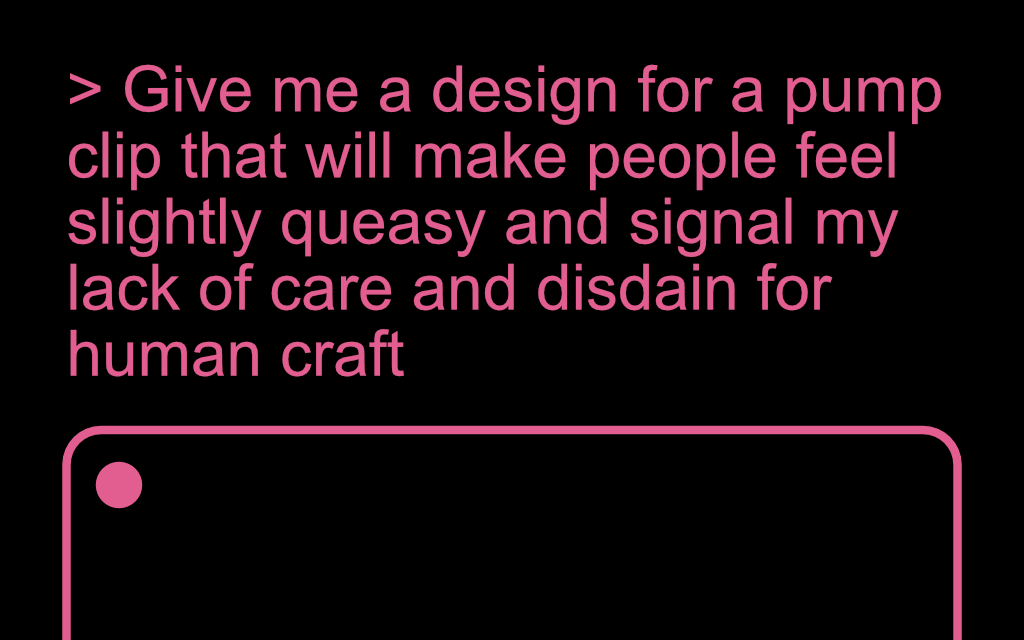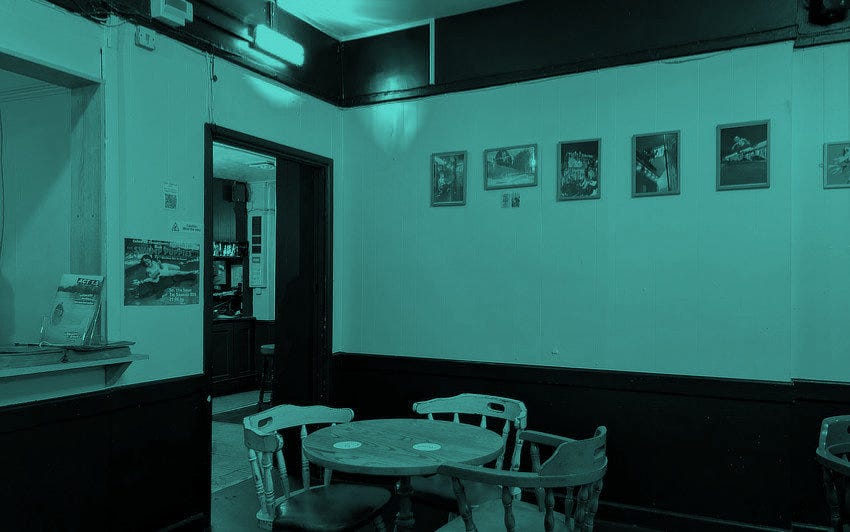Your beer brand does not need AI
Sure, it might be fun to use, and might feel magical – but AI artwork on your beer packaging is a major turnoff.
A debate about the use of AI imagery by breweries broke out on BlueSky last week, with arguments for and against.
For esteemed beer historian Martyn Cornell, who has used AI imagery to spruce up the pump clips for his brother’s brewery, it’s a legitimate tool:
“I used AI to create the artwork for a pump clip for my brother’s brewery, and it’s great - and no human artist lost out because we wouldn’t have been able to afford one…”
Others raised moral and ethical objections, ranging from environmental concerns to problems with indirect plagiarism to questions of creative integrity.
The latter argument goes something like this: if we want people to buy beer from small, independent breweries, why are we adopting technology that threatens the existence of small, independent creative studios? Aren’t we all in this together?
Those are all big, complex, important questions, which it’s important for anyone using generative AI tools in their life and work to ask.
After a period of intense experimentation in our respective day jobs, we now limit our use of ChatGPT and similar tools as much as possible for the reasons above, and others.
The biggest objection we have to AI imagery specifically, however, is that it looks like dog shit.†
This isn’t the 2022 complaint that, ha ha, all the hands have six fingers! Because that’s mostly been fixed. No, it’s that even relatively successful AI imagery looks uncanny, smeary, imprecise and/or overly fussy.
When a brewery decides to slap images generated with Midjourney on its cans, meaning that each seasonal or special release can have its own unique design, it makes us feel (a) slightly queasy and (b) less inclined to buy from that brewery.
Remember 15 years ago when we were all debating badly designed, tacky pump clips? It wasn’t only that they were often sexist or otherwise morally repugnant.
It was also that they used cheap clip art and badly-drawn cartoons, sending a clear signal: “Nobody here has any taste, judgement, or concern for quality.”
AI art might look, at first glance, out of the corner of your eye, less janky than clip art. But, really, it’s not.
But how, you might ask, is a small brewery supposed to compete when it can’t afford to pay human illustrators and designers?
By keeping it simple.
We’d rather look at Good Chemistry’s clean, minimalist pump clips than one with an over-elaborate DeepDream wonky nightmare illustration of a monkey in a spacesuit any day.
Good Chemistry has a standard design which allows them to change colours, typography, and other small details, while retaining a basic uniformity across the range. We’d be surprised if this isn’t managed through a template in Photoshop or similar.
Another Bristol brewery, Ashley Down, has pump clips whittled from wood. They have the name of the beer and the slogan “Nice with crisps!” around the top. They’re simple to the point of being rustic – and they scream: “This is a human endeavour, dedicated to craft.”
We get it. AI can feel magical, like a superpower that suddenly turns everyone into a graphic artist. But it’s also bewitching and worryingly addictive – a habit that’s at least worth trying to kick.
It can be done.
We were delighted when Jeff Alworth stopped using AI imagery to illustrate his blog posts. We kept reading them and sharing because the research and writing was good, despite the pictures at the top which made us want to look away.
† “In your opinion…” Well, yes, but do we really need to keep stating that? This newsletter is written in the first person and signed by us. Whose opinion could it be other than ours? Penelope Keith’s?
Stout blending
We’ve been abusing Orval for years to make blander beers more interesting. A splash of that Brettanomyces-laden beer turns almost any bottled ale into something complex and intriguing.
Lately, though, we’ve realised the same trick works with strong, funky imperial stouts, which can add extra dimensions to any dark beer.
This was triggered by the availability of Kernel Vatted Stout Porter at The Swan With two Necks in Bristol. On its own, it’s a fascinating, deeply complex beer – but perhaps a bit much to enjoy for more than a third of a pint.
Meanwhile, Moor Stout, which we love on cask, is only OK from a keg, seeming blander and sweeter in that format.
But when the two beers meet in the same glass, something magical happens: Moor Stout + Kernel Vatted = electricity.
What we’d like to try next is Guinness + Harvey’s Imperial Stout. One bottle of the latter could liven up an entire session on the former.
Pub exploring
In the run up to Christmas we got into the habit of visiting pubs around Bristol that perhaps we’d neglected. We’re hoping to continue that in the coming months.
In late December, we nosed around the part of Clifton between Whiteladies Road and the Downs, taking particular note of The Port of Call with its excellent Timothy Taylor Landlord.
Then in January, so far, we’ve managed a crawl of the pubs of Easton, which introduced us to a new favourite, and reminded us of a couple of other good ‘uns.
We’ve got our eyes on Bedminster next where there are still a number of pubs we’ve never visited. Frankly, we’re a bit nervous about a couple of them.
They present blank faces to the street and have signs saying “No shoplifters” and “No drugs permitted on these premises” which (perhaps we’re wrong) suggests they might be full of shoplifters and drug dealers.
And at the other end of the social scale, there’s Clifton proper, where the pubs are generally too boringly posh for us. But who knows what might have changed in the past few years?
On the blog
December was about round-ups and end-of-year admin, including:
We also updated our Bristol pub guide for 2025, removing a bunch of pubs and adding some new ones. You can learn more about the rationale behind our decisions on Patreon, if you’re a subscriber.
Between and around all of that we also wrote about the brief lives of beer brands in the wake of the news that Marston-Carlsberg are doing away with a bunch of cask ale brands. This one generated some good comments, from additional data on the founding dates of specific beer brands, to some entertaining grumpiness. Worth a look.
Ray cycled back to thinking about his late dad, the run up to the first Christmas without him prompting some melancholy reflection.
More cheerfully, we also wrote up our crawl around the pubs of Bristol’s harbourside in the run up to Christmas, and a similar crawl around Easton, Bristol, in early January.
In between, we found many of Bristol’s pubs closed or running on restricted hours which worried us a bit: “In the past few weeks we think we’ve noticed a vicious circle in effect: pubs aren’t open, so we don’t go out, so it’s not worth it for pubs to be open…”
There were also the usual weekly round-ups of news, nuggets and longreads on the blog, along with bonus footnotes on Patreon.
And Patreon subscribers also got weekly notes on the best beers we drank each weekend.
We also continue to be somewhat active on BlueSky – follow us there if you want real-time updates, or want to chat.
That’s it, that’s your lot.
Until next month, cheers!
Ray & Jess









Wild generalisations based on no actual evidence whatsoever. And if you don't bother looking at what I am showing you, then you have utterly no argument at all. I can assure you there are no smeary or nonsensical colours, and all is crisp and clear.
There's a major logical flaw in your argument, I'm afraid. "AI-generated imagery I have spotted looks bad and feels bad" ≠ "All AI-generated imagery looks bad and feels bad." You're only spotting the bad stuff. You've unconsciously accepted the good AI-generated images, because you can't tell it apart from human-generated images. And if you claim you can tell all AI-generated art when you see it, I have to say I don't believe you …